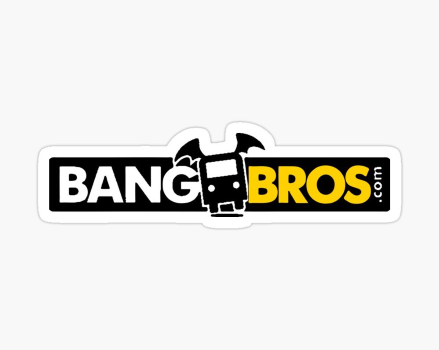On the hunt for a good bargain? Look no further than the science of discounts. By analyzing offers and understanding how retailers use pricing strategies, consumers can navigate sales with confidence and get the best deal possible.
We will explore the psychology behind discounts, discuss effective negotiation tactics, and reveal insider tips on maximizing savings. Get ready to become a savvy shopper by mastering the science of discounts.

Evil Angel
 Multiple weekly video updates
Multiple weekly video updates Over 18,000+ hardcore videos
Over 18,000+ hardcore videos Unlimited access to 80+ channels
Unlimited access to 80+ channels Award-winning series with top pornstars
Award-winning series with top pornstars
Adult Time
 New releases every day
New releases every day 60,000+ episodes & 400+ channels
60,000+ episodes & 400+ channels Supports VR & interactive sex toys
Supports VR & interactive sex toys Watch on mobile, desktop or FireTV
Watch on mobile, desktop or FireTV
LetsDoeIt
 4K Exclusive Porn
4K Exclusive Porn 1000+ Scenes
1000+ Scenes Unlimited Steaming & Downloading
Unlimited Steaming & Downloading New Models You Wouldn't Have Seen
New Models You Wouldn't Have Seen Free Trial (Steaming Only)
Free Trial (Steaming Only)
Brazzers
 4K Exclusive Porn
4K Exclusive Porn 10000+ Scenes
10000+ Scenes Unlimited Steaming & Downloading
Unlimited Steaming & Downloading Over 2500 Pornstars
Over 2500 Pornstars Discounted Membership
Discounted Membership
Naughty America
 Unlimited downloading & streaming
Unlimited downloading & streaming Over 10,000+ porn scenes
Over 10,000+ porn scenes HD, 4K & VR porn content
HD, 4K & VR porn content Supports all devices including VR headsets
Supports all devices including VR headsets
MamaCitaz
 4K Exclusive Latina Porn
4K Exclusive Latina Porn 800+ Scenes
800+ Scenes Unlimited Steaming & Downloading
Unlimited Steaming & Downloading Exclusive Latina Models
Exclusive Latina Models Free Trial For Two Days
Free Trial For Two DaysThe Science of Discounts: How Analyzing Offers Can Lead to Better Bargains
As consumers, we are constantly bombarded with offers and discounts from various retailers. These deals can range from a certain percentage off the total price to buy-one-get-one-free promotions. While these discounts may seem enticing at first glance, it is important for shoppers to analyze them carefully before making a purchase. By understanding the science behind discounts, one can make more informed decisions when it comes to bargains and ultimately save money in the long run.
Understanding the Psychology Behind Discounts
The concept of discounts taps into our innate desire for saving money. When we see a discounted price, our brains interpret it as an opportunity to gain value or save resources. This triggers a sense of urgency and encourages us to take advantage of the deal before it expires or runs out of stock.
Moreover, the use of words such as sale, limited time offer or while supplies last evoke feelings of scarcity and exclusivity, further fueling our desire to grab the bargain while we still can. As human beings, we tend to place higher value on things that are scarce or limited in availability.
Studies have shown that seeing multiple prices side by side also plays a role in our perception and decision-making process. For instance, if two identical items are priced at $100 and $80 respectively with no context given, most people would choose the cheaper option without hesitation. However, if another item is added with a higher price (e.g. $120), then suddenly the $100 item seems like a better deal compared to its counterpart.
These psychological factors make it easier for retailers to manipulate their customers into impulsively buying products they don’t necessarily need just because there’s a discount involved.
The Importance of Analyzing Offers
Given the persuasive nature and potential impact of discounts, it is crucial for consumers to analyze offers carefully before making a purchase. This involves looking beyond the flashy numbers and considering various factors such as the original price, quality of the product, and personal needs or wants.
Oftentimes, retailers may inflate their prices just to create an illusion of a bigger discount. If a store marks up the price of an item by 50% and then offers a 20% discount, you are still paying more than the actual worth of the product. By doing some research and comparing prices from different sources, you can ensure that you’re getting a true bargain rather than falling prey to deceptive pricing strategies.
It’s important to consider whether the discounted item aligns with your needs and preferences. Just because something is on sale doesn’t necessarily mean it’s worth buying if it doesn’t serve its purpose or satisfy your requirements. It’s also helpful to evaluate how frequently you’ll use the product – if it’s a one-time usage or not needed in your daily life, then even a substantial discount may not justify the purchase.
The Science Behind Different Types of Discounts
Percentage-Based Discounts
One of the most common types of discounts is percentage-based where a certain amount is deducted from the original price. While this sounds straightforward enough, there are actually two ways retailers can apply percentage-based discounts:
- Discount Off List Price: In this method, retailers offer a discount off of their suggested retail price (MSRP) which they have set themselves based on market trends and competition. However, keep in mind that MSRP may differ significantly from what other stores are selling for so always do your research before assuming that a discount off list price is the best deal.
- Discount Off Sale Price: This type of percentage-based discount is applied to an already discounted item. If a dress originally priced at $100 goes on sale for 25% off, you would pay $75. If there’s an additional discount of 10%, then the final amount will be $67.50 (25% off the original price and another 10% off the sale price).
The key here is to always compare the discounted price with what other retailers are offering or have previously sold it for. In some cases, retailers may increase their prices before applying discounts so that they can still earn a profit while making customers feel like they’re getting a good deal. While Mr Skin Reviews offer an in-depth look at the latest celebrity news and gossip, their discount subscription through Cofely GDF Suez is a great way to save on access to this popular site.
Bulk Discounts
Sometimes, retailers offer bulk discounts where buying multiple items results in an overall lower cost per unit. This strategy works particularly well for products that are frequently used and don’t expire quickly such as toiletries or canned goods.
However, bulk discounts may not always lead to savings depending on your usage rate and storage space. For instance, if you only go through one bottle of shampoo every two months but decide to buy three bottles because of a buy-two-get-one-free promotion, you will end up spending more money upfront without necessarily saving any in the long run.
Coupons and Vouchers
Coupons and vouchers are popular forms of discounts offered by many retailers both online and in-store. These often come in different types such as dollar-off coupons (e.g. get $5 off your purchase), free gift with purchase (e.g. spend $30 and receive a free lipstick) or percentage-based coupons (e.g. get 20% off your total order).
While coupons and vouchers can lead to significant savings, it’s important to read the terms and conditions carefully. Some may have a minimum purchase requirement or only be applicable on certain items, while others may have an expiration date which could result in wasted money if not used in time.
Loyalty Programs
Many retailers also offer loyalty programs where customers earn points for their purchases which can then be redeemed for discounts or rewards. These programs are designed to encourage customer loyalty and incentivize them to keep coming back for more.
If you’re a frequent shopper at a particular store, signing up for their loyalty program is definitely worth considering as it can lead to significant savings over time. Just make sure to read the fine print and understand the redemption process before assuming that all your points will translate into dollar savings.
The Role of Timing in Discounts
In retail, timing is everything – even when it comes to discounts. Knowing when and where to look for bargains can greatly impact how much you save on your purchases. Here are some key factors to consider:
Holidays and Special Events
Retailers often use holidays and special events such as Black Friday, Cyber Monday, Christmas, or Back-to-School sales as opportunities to attract customers with discounted prices. Many consumers wait until these times of the year to shop because they know there will likely be good deals available.
However, this can also create a sense of urgency in shoppers leading them to make impulsive purchases without properly analyzing the offers first. You can gain a new perspective on the latest film releases with simply click the next site, providing insightful reviews from a unique point of view. To avoid falling into this trap, it’s helpful to plan ahead and make a list of what you actually need so that you don’t get swayed by flashy discounts on items you don’t really want or require.
Seasonal Sales
Retailers also have seasonal sales where they offer discounts on items that are out of season. For instance, winter coats and boots will likely go on sale in the summer while swimsuits and sandals will be discounted during winter months.
Timing your purchases to coincide with these sales can lead to huge savings, especially for big-ticket items such as furniture or electronics. However, keep in mind that retailers may use this strategy to get rid of old stock or unpopular products so it’s important to evaluate whether the item is still worth buying even at a discounted price.
Pricing Mistakes
Sometimes, retailers make mistakes when entering prices into their systems which could result in a product being priced much lower than its actual value. While rare, these pricing errors do happen and savvy shoppers know how to take advantage of them by quickly snatching up the deal before it gets corrected.
A good way to stay updated about potential pricing mistakes is by following deal-finding websites or setting up price alerts for specific products you’re interested in buying. Just remember that these deals may not always work out in your favor – there’s always a risk involved when relying on an error rather than an official discount from the retailer.
The Role of Data Analysis in Determining Discounts
Data Collection and Tracking
In today’s digital age, data collection has become more prevalent than ever before. Retailers track customer behavior, preferences, purchase history, and other relevant information through various means such as loyalty programs, website cookies, surveys, social media engagement, etc.
This data is then analyzed using complex algorithms and predictive models to determine trends and patterns which can help retailers understand what customers want and how they respond to different types of discounts. By knowing their target audience better, retailers can create offers that are tailored to their customers’ needs and preferences in order to drive sales.
Dynamic Pricing
Data analysis has also given rise to a pricing strategy known as dynamic pricing. This involves adjusting prices based on factors such as demand, inventory levels, and competition. Online retailers are particularly adept at using this strategy where prices can change multiple times within a day or even a hour.
The use of algorithms allows retailers to constantly monitor market trends and make real-time changes to their pricing strategies. While this may seem unfair to consumers who may end up paying more for the same item if they wait too long, it ultimately benefits retailers by maximizing profits and reducing excess inventory.
Predictive Analytics
Besides understanding customer behavior, data analysis can also help determine what discounts will be most effective in driving sales. Through predictive analytics, retailers can forecast how different offers will impact customer buying decisions and adjust their strategies accordingly.
Knowing that a certain demographic responds better to percentage-based discounts rather than free gifts with purchase can help retailers create targeted promotions that cater specifically to that group. By leveraging data insights, retailers can optimize their discount strategies and ultimately increase revenue.
The Future of Discounts: Personalization and Automation
Personalized Offers
In the future, we can expect discounts to become even more personalized thanks to advancements in technology. Retailers are constantly finding ways to gather more information about customers – from their online browsing history and social media activity to location tracking through mobile devices – all in an effort to provide personalized deals tailored specifically for each individual shopper.
This level of personalization not only enhances the shopping experience but also increases the likelihood of conversion as customers feel like they’re being understood and valued by the retailer.
Automated Discounts
Automation is another area where we can expect to see changes in how discounts are offered. With the rise of artificial intelligence (AI) and machine learning, retailers will be able to analyze large amounts of data at a much faster pace than ever before. This means that they’ll be able to make more accurate predictions about customer behavior and create highly targeted promotions on-the-fly.
We may also see an increase in subscription-based services where customers pay a flat fee for access to exclusive deals and offers. These memberships could potentially use AI to analyze customers’ spending habits and preferences, automatically providing personalized discounts based on their individual needs.
The Bottom Line
The world of discounts is constantly evolving as retailers find new ways to attract and retain customers through enticing offers. As consumers, it’s important for us to understand the psychology behind these bargains and not get swayed by flashy numbers or words such as sale or limited time offer. By analyzing discounts carefully, considering our personal needs and wants, and staying updated with market trends, we can make smarter shopping decisions and ultimately save money in the long run.
Moreover, with advancements in technology, we can expect even more personalized and automated discounts in the near future. While this may seem overwhelming at first, understanding how retailers use data analysis can help us navigate through the world of discounts more effectively – resulting in better bargains for all of us.
What Factors are Taken Into Consideration When Determining a Discount on a Product Or Service?
There are several factors that are typically considered when determining a discount on a product or service. These may include the cost of production, market demand, competition, seasonal trends, and current economic conditions. The profit margin desired by the company, customer loyalty and retention goals, and any promotional strategies may also play a role in determining the amount and duration of the discount.
How Can I Ensure That the Discount Being Offered is Actually Beneficial to Me As a Consumer?
To ensure that a discount being offered is actually beneficial to you as a consumer, it is important to analyze the discount carefully. Look at the original price and compare it to the discounted price to determine if the discount is significant. Consider the terms and conditions of the discount, such as expiration dates or required purchases, to make sure they are reasonable and do not outweigh the savings. It may also be helpful to research similar products or services to see if there are other discounts available that may be more advantageous.



